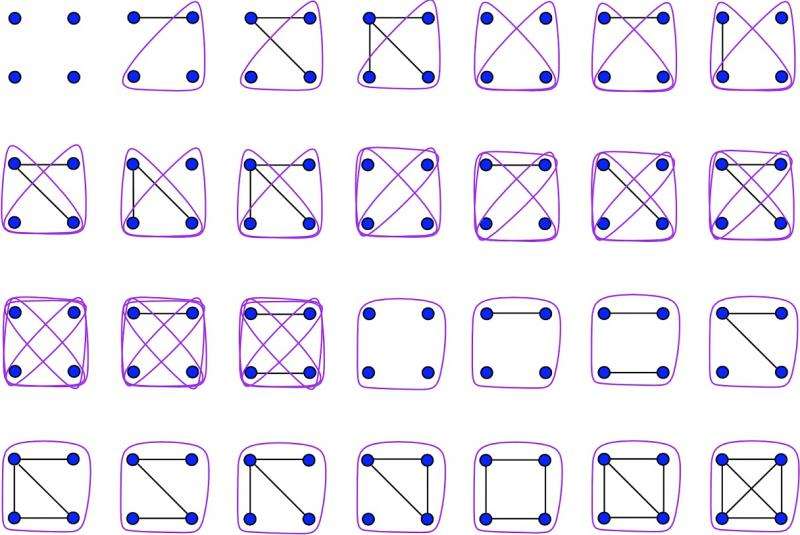March 4, 2016 feature
Physicists find extreme violation of local realism in quantum hypergraph states

(Phys.org)—Many quantum technologies rely on quantum states that violate local realism, which means that they either violate locality (such as when entangled particles influence each other from far away) or realism (the assumption that quantum states have well-defined properties, independent of measurement), or possibly both. Violation of local realism is one of the many counterintuitive, yet experimentally supported, characteristics of the quantum world.
Determining whether or not multiparticle quantum states violate local realism can be challenging. Now in a new paper, physicists have shown that a large family of multiparticle quantum states called hypergraph states violates local realism in many ways. The results suggest that these states may serve as useful resources for quantum technologies, such as quantum computers and detecting gravitational waves.
The physicists, Mariami Gachechiladze, Costantino Budroni, and Otfried Gühne at the University of Siegen in Germany, have published their paper on the quantum hypergraph states in a recent issue of Physical Review Letters.
The properties of multiparticle quantum systems are described by quantum states, some of which can be represented on a graph where each point corresponds to a particle and each edge to the interaction between particles. While some quantum states can be represented by ordinary graphs, others are represented by hypergraphs. On an ordinary graph, two points can be connected by an edge, while on a hypergraph, a hyperedge can connect more than two vertices. Whereas an ordinary edge is usually drawn as a straight line between two vertices, a hyperedge is depicted as a curve that wraps around three or more vertices.

In the new study, the physicists discovered that quantum hypergraph states have perfect correlations that are highly nonlocal. As the scientists explain, this means that hypergraph states strongly violate local realism.
"We find a whole new class of elegantly described states that are highly entangled," Gachechiladze told Phys.org. "This class is a generalization of a well‐known and heavily used family of graph states."
The physicists also showed that the greater the number of particles in a quantum hypergraph state, the more strongly it violates local realism, with the strength increasing exponentially with the number of particles. In addition, even if a quantum hypergraph state loses one of its particles, it continues to violate local realism. This robustness to particle loss is in stark contrast to other types of quantum states, which no longer violate local realism if they lose a particle. This property is particularly appealing for applications, since it might allow for more noise in experiments.
One such potential application is quantum computing, which may benefit because the exponential violation found here is expected to correspond to an exponential advantage for certain computation tasks. Another application is quantum metrology, where physicists take advantage of quantum properties to make extremely precise measurements that would not be possible using classical measurement techniques.
"High entanglement has been recognized to be the key for certain information‐theoretic tasks," Gachechiladze said. "We find that some hypergraph states can be used in quantum metrology, namely, in measuring some parameters with a very high precision using quantum measurements. Such quantum-enhanced measurement strategies may play an important role in future precision experiments, such as in the search for gravitational waves."
The researchers will further explore these possibilities in the future.
"We plan to investigate more in the direction of entanglement properties," Gachechiladze said. "Also we are working towards an experimental proposal to create hypergraph states using photons or trapped ions. Finally, we would like to employ this set of quantum states in applications such as measurement‐based quantum computation and error‐correcting codes."
More information: Mariami Gachechiladze, et al. "Extreme violation of local realism in quantum hypergraph states." Physical Review Letters. DOI: 10.1103/PhysRevLett.116.070401
Also at arXiv:1507.03570 [quant-ph]
Journal information: Physical Review Letters
© 2016 Phys.org. All rights reserved.




















